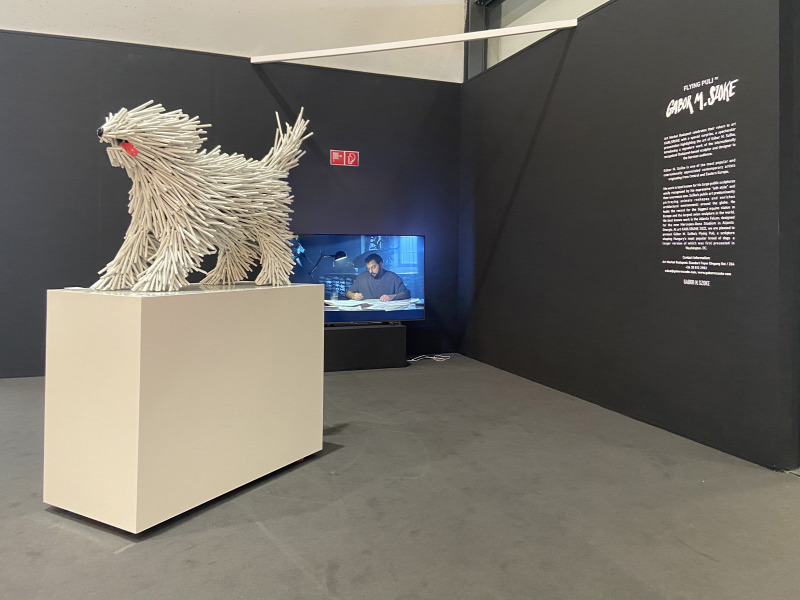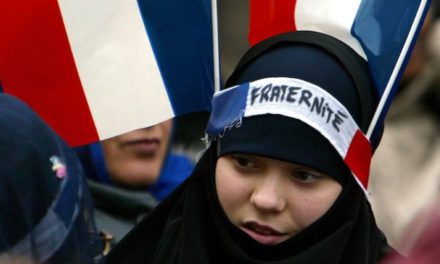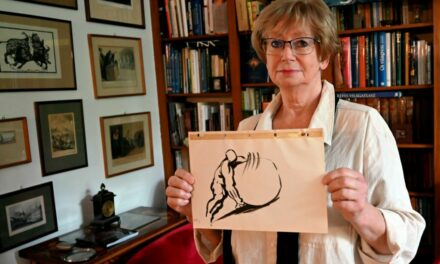Germany is one of the great powers of the European art market, so for artists, the opportunity to present themselves at one of the largest and most visited art fairs in Germany, art Karlsruhe, which is held annually in the wealthy state of Baden-Württemberg, in the immediate vicinity of France, is a special opportunity. As a professional partner of art Karlsruhe, ART MARKET BUDAPEST, the leading international art fair of Central and Eastern Europe, will take place July 6-10, 2022 following the restrictions that have plagued the art market in recent years. surprised the audience in Karlsruhe with a special gesture: in the central location provided by the organizers in the center of the exhibition space, the sculpture Flying Puli by the internationally renowned Hungarian artist Gábor Miklós Szőke became the audience favorite of this year's art parade. The Várfok Gallery also contributed to the successful Hungarian artistic presence: Hungary's first commercial gallery after the regime change presented a selection featuring several generations of Hungarian artists to the tens of thousands of German audiences.
Art Karlsruhe was first presented in Budapest in 2014 thanks to its Hungarian partner, and then in 2015, on the initiative of art Karlsruhe, Art Market Budapest, with the involvement of several Hungarian galleries and the Capa Center, was able to present an extremely rich Hungarian photography exhibition entitled Photo Art Budapest in the outstandingly visited German exhibition army review.
The success of the collaboration between the two art fairs serves as an excellent example for other players in the industry. This is not least due to the fact that Art Market Budapest will host this year's event on October 6-9, 2022. between 2018 and 2018, German galleries are already returning in the number before COVID and with a record-breaking floor area larger than ever before.
After the dramatic developments caused by COVID in recent years, the partners decided that Art Market Budapest will return to the Karlsruhe audience with a special surprise in a spectacular setting. Based on the joint decision of the organizers, Miklós Gábor Szőke's spectacular Flying Puli sculpture was presented at the fair's central exhibition space with the highest traffic.
The sculpture of the artist, known primarily for his large-scale public works, aroused extraordinary interest in the opening event of art Karlsruhe from the predominantly professional and collector audience, and also among a large number of visitors during the four days of the opening, undoubtedly becoming the audience favorite of this year's fair.
One of the most successful Central and Eastern European artists of our time, Miklós Gábor Szőke's public sculptures predominantly depicting animals are now popular all over the world, his best-known work is the Atlanta Falcon, the huge bird figure stands in front of the Mercedes-Benz Stadium in Atlanta, but the one erected a few weeks ago in Athens, his creation in the shape of a huge eagle is already referred to by many as the most significant contemporary public sculpture in Greece. In addition to his monumental public sculptures, his limited number of smaller works are extremely popular among private collectors, all of which can now be found in private collections in many parts of the world. The work that was just presented in Karlsruhe also attracted a lot of interest from collectors, and the work ended up in a private collection in Stuttgart.
The presence of Hungarian art in Karlsruhe is not new, the Várfok Galéria can now be considered a traditional exhibitor of art Karlsruhe. This time, one of the highlights of the gallery's exhibition stand and the fair as a whole was a selection of works by Françoise Gilot, who recently celebrated her 100th birthday, accompanied by a compilation of works by several renowned Hungarian artists.
Courtesy of Várfok, the tens of thousands of visitors were able to see the latest expressive, calligraphic works of franyo aatoth, the latest series of acrylic paintings by the versatile artist and performer János Szirtes, and the emblematic concise, figurative-decorative works of Sándor Rácmolnár, as well as the four bravura artists of the young Hungarian creative generation. with a technical representative. The highly sensitive, watercolor-like nudes of Anna Nemes, the surreal, baroque compositions of Máté Orr and the extremely unique collage and montage pictures of Kata Gaál, as well as the sculptures of the woodworker Ervin Békési, which evoke the transition between figural and abstract, were also presented at the Karlsruhe army exhibition.
Source and image: Origo












